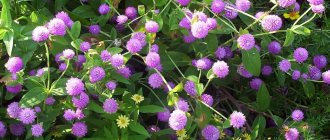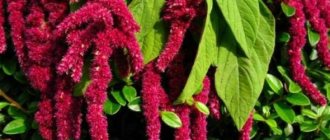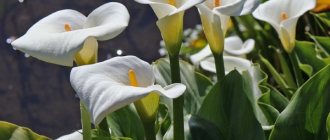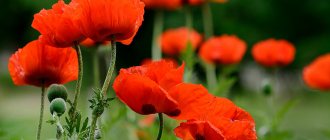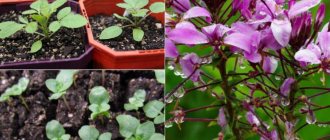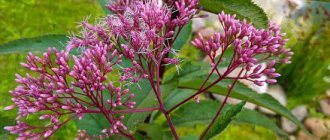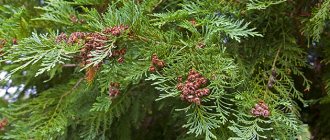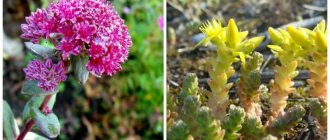The beginning of autumn does not necessarily mean goodbye to garden flowers - it is a time when you can admire some autumn plant species on your yard! Colchicum's beautiful purple flowers appear in September and herald the coming fall. Gardens, terraces and balconies can be decorated with pastel colors of their delicate petals. They begin flowering in late summer and end in October. We will tell you how to grow colchicum - planting and care in open ground, and present photos of interesting varieties.
Description of the plant
Colchicums or colchiums, autumn flowers (lat. Colchicum) are beautiful autumn flowers belonging to the order Liliaceae. The genus Colchicum includes several dozen species, some of which have become the main attraction of the past summer. Natural habitats are in Asia and Europe. Plants do very well in temperate climates.
The Latin name Colchium comes from the Georgian geographical region - the Colchis Lowland, where the plant spread in large numbers, decorating the land with beautiful flowers.
Due to its close resemblance to crocus, it is often confused with its autumn varieties. Winter crocuses bloom at the same time of year as autumn crocuses, which leads to confusion. Colchicums do not have leaves when they bloom, a feature that distinguishes them from autumn crocuses.
Photo. They differ in the structure of the flower - the crocus is small, has 3 stamens (on the right), the colchicum flower (on the left) is much larger, has 6 stamens.
The Russian name "osennik" comes from the fact that these bulbous flowers appear in the fall and are a harbinger of cold days.
Botanical description:
- Perennial plant, reaches 8-30 cm in height.
- Root. The plant regenerates annually from a scaly corm. The outside of the colchicum tuber is covered with two dry leaf shells, under which there are 3-4 leaf buds that develop in early spring of next year. In autumn, a furrow forms at the old tuber, in which two or three young descendant tubers are formed, extracting reserve substances from the old tuber. The mother bulb gradually dies off until next summer.
- The stems are short, barely coming out of the ground.
- Leaves colchicum appear in the spring. Number of leaves: 3-8 (depending on the size of the tuber). They are narrowly lanceolate, often narrow, obtuse, 2-4 cm wide. The rosette of juicy green broadly lanceolate leaves reaches 30 cm in height. The leaves persist until June, then they turn yellow and die, and the plant goes into a dormant state.
- Flowers. At the end of summer and beginning of autumn, beautiful flowers appear, very similar in shape to spring crocuses. Sometimes (rarely) colchicum blooms in spring. Pastel colors emphasize the tenderness and fragility of the flower. Flowering lasts about three weeks, after which the flowers wither as suddenly as they appeared. The color of the flowers is pink-lilac, lilac, less often white. The flowers are funnel-shaped and relatively small compared to other species. The flowers are bisexual, with one perianth, 6 stamens, of which 3 are short and 3 long, and one pistil.
- Fetus. Flowers are pollinated by bees, flies, and bumblebees. Inside the rosette of leaves, a three-chambered fruit appears underground - an egg-shaped capsule, which contains seeds that ripen in late spring - early summer. In spring, the fruit comes out of the ground and rises above the surface along with the leaves. The seeds are dark brown, spherical, slightly wrinkled.
Plant development cycle:
- At the end of August, beautiful goblet-shaped flowers appear.
- After about 2-3 weeks, the flowers disappear, but seeds begin to form.
- In spring, fruits with leaves appear. By July, the seeds will ripen and the above-ground part of the plant will die again, but not for long, because at the end of August the plant begins to bloom again.
Attention! Colchicums are very poisonous. All organs contain colchicine, a poison dangerous to people and animals. Animals instinctively avoid it. In people, 4-6 hours after ingestion, numbness and burning in the mouth, difficulty swallowing, nausea, vomiting, acute diarrhea (sometimes with blood), a drop in body temperature and blood pressure, and ultimately respiratory paralysis. Even the water in which plants stand in a vase becomes poisonous!
Colchicine, like other alkaloids contained in colchicum, does not harm sheep and goats, but their milk after such feeding becomes unfit for consumption and poisonous. Interestingly, cattle and horses instinctively sense danger, avoiding both fresh and hay-dried plant parts.
The lethal dose for humans is about 0.02 g of colchicine (this amount is contained in 6 g of seeds). Accidental fatal poisoning is very rare and usually occurs as a result of confusion with the wild garlic plant (wild garlic, bear's onion).
This information should be taken into account when choosing a place to plant the plant - make sure that children and pets do not have access to it.
Features of Colchicum
Such a herbaceous plant is a perennial, and it is also an ephemeral. It has a large number of short shoots, on which large lanceolate-elongated leaf plates are located. They grow and develop during the spring, and by the beginning of the summer period they completely die off. On the surface of the corms there is a brown shell. This shell forms a long tube that covers the lower part of the flower. Most species of colchicum bloom in spring. However, in some species flowering occurs in the spring. Single funnel-shaped flowers grow from the soil. The length of such a flower, together with the perianth fused into a tube (most of it is located under the surface of the soil), is 20 centimeters. The fruit is a three-locular oval spherical capsule. This plant contains poison; Dioscorides himself mentioned this in his works. It should be remembered that the poison is found in any part of this plant.
Unpretentious flowers for the garden. Colchicums. Website "Garden World"
Popular types
The most popular species grown in our gardens:
- Colchicum splendid - Colchicum speciosum;
- B. byzantine – Colchicum byzantinum;
- B. autumnale – Colchicum autumnale;
- B. hybrid – Colchicum hybridum;
- B. mountain – Colchicum montanum.
Autumn
One of the most popular species of the genus is Colchicum autumnale, which pleases with large flowers up to 10 cm in diameter. Found in the wild in Africa and Europe. Flowering plants can also be found in foothill areas. One tuber can produce several flowers up to 15 cm high and about 10 cm in diameter.
According to the World Conservation Union, it is an endangered species.
Interesting varieties:
- "Albiflorum" Albiflorum with white flowers;
- "Purpureum" Purpureum with purple flowers;
- "Antares" Antares with delicate white-purple flowers;
- “Water Lily” Waterlily – its lush flowers resemble water lilies.
Photo. Autumn colchicum
Hybrid
Garden hybrids bred by crossing several species are very popular. As a result of breeding work, numerous varieties of beautifully flowering plants have been obtained, very diverse, with large flowers and many shades of purple and pink. Unfortunately, these are short-lived specimens. They do not grow, but in return they give lush blooms.
Byzantine
The least demanding, abundantly flowering species is the Byzantine colchicum (Colchicum byzantinum). It produces up to a dozen flowers from one tuber and reaches a height of 20 cm. Its natural habitat is in Asia Minor.
Photo. Colchicum Byzantine
Fabulous
The species Colchicum speciosum lives in the Caucasus. The flowers are very large, up to 15 cm in diameter, with a plant height of 25 cm. It may not bloom as profusely as the Byzantine species, but the number of flowers is higher than that of the autumn species, reaching 10 flowers per bulb.
Photo. Colchicum splendid
Among the varieties is the one with white flowers.
Motley
Colchicum variegatum produces wide, funnel-shaped, red-purple flowers with a prominent checkered pattern.
Interesting varieties grown in gardens
There are many noble varieties of colchicum. Commercially available varieties differ mainly in color, size, number and structure of flowers. You can choose from varieties with white, pink or purple flowers (and all their shades), as well as double or single petals. Terry varieties are the most beautiful, but they are more sensitive to cultivation and less frost-resistant.
| Variety name, description | Photo |
| Colchicum autumnalis "Waterlily" Waterlily - with purple-pink double flowers, shaped like water lilies. Height – 15 cm. | |
| "Antares" Antares - the variety pleases with the unique delicacy of white and pink flowers. | |
| “Innocence” Innocence is a variety of Byzantine colchicum. | |
| "Giganteum" Giganteum is a variety with exceptionally large flowers. | |
| “Album” Album is a variety with white flowers. Plant height – 8-30 cm. | |
| “Alboplenum” Alboplenum – height: 15 cm. Flowers: white. The leaves are long and hanging. | |
| "Albiflorum" Albiflorum - white flowers. | |
| "Atrorubens" Atrorubens with flowers in shades of pink. | |
| “Giant” Height: 20-30 cm Flowers: lilac. Flowering time: August – September. | |
| "Dombai" Dombai - large purple flowers with a white center. | |
| “Violet Queen” Violet Queen 15 cm high. Flowers: lilac. | |
| "Harlequin" - grows up to 15 cm Flowers: lilac inside, then white. Flower petals curl at the edges, giving the impression that they are “pointed”. |
A little history
The ancient Greeks knew this flower. They considered this plant a gift from Persephone, daughter of the earth goddess Gaia.
According to legend, Gaia, very saddened by the “disappearance” of her daughter, who was kidnapped by the god of the underworld, received a crocus from Persephone as a gift, so that these flowers would dispel her mother’s sadness. The flower was also known in Ancient Egypt and India as a medicine. Avicenna also mentioned him. For a long time, the perennial autumn plant was classified as saffron and irises, but the time of its flowering was surprising. After all, crocuses (crocuses) bloom in early spring, and this one always almost bloomed in the fall. It was this property of the plant that attracted flower growers and breeders. It began to be cultivated in flower beds and new varieties and species were developed.
Requirements for planting site and soil
Colchicum in its natural environment loves wet meadows, light mixed forests and sparse thickets. Light-loving, but tolerates periodic shading. Therefore, he should prepare semi-shaded places exposed to sunlight. They grow worse in the shade; in such conditions, varieties with white flowers (“Album”) can be planted. The plant does not like wetlands where it begins to rot.
Plants in full sun have stiffer stems than those growing in the shade, so they don't fall off as quickly after autumn rain (flowers that are broken and stuck to the ground won't rise again).
The following soil is preferable for colchicum:
- fertile;
- humus;
- rich in nutrients;
- humidity is moderate;
- clayey or sandy loam;
- preferably neutral or slightly alkaline (pH 5-7).
When planting, avoid places that are too wet or dry.
If the soil is too sandy, it should be enriched with compost. This way we will improve the structure of the substrate, enrich it with nutrients that will stimulate flowering.
Where to plant?
Colchicums love a sunny place, but they also do well in shaded places. Colchicum planted in the shade of trees will be eaten by slugs. Therefore, you should not plant it in deep shade. You should not plant the plant on the northern side of the bushes. Colchicum will not bloom in such places; it prefers the south side. Plants need well-drained soil, water should not stagnate where colchicums grow, but it doesn’t matter what the composition of the soil is - acidic or alkaline. The perennial grows even on clay soils.
Landing
The plant is grown on fertile, weed-free soils. Before planting colchicum, you should prepare the soil, weed it thoroughly, and add well-rotted compost.
Planting the plant is not difficult, it is unpretentious. It is important to know when to plant crocus in open ground. Although this plant grows from bulbs, it should not be planted in the ground in the fall like tulips or crocuses. It is worth doing this a little earlier - in early or mid-August, thanks to this we will see flowers in the fall.
Corms are planted at the end of August. The planting depth of colchicum depends on the size of the tuber. When planting, you need to maintain a distance between plants of at least 15 cm.
The flower buds of the bulb may be released before planting (at the first stage they look like bean sprouts).
Planting colchicum - step by step:
- We put on gloves - the tubers are very poisonous (therefore many pests do not attack them). Touching them with bare hands is not dangerous, but it is better to be careful with the juice. Gloves also protect your skin and nails from dirt.
- Tuber preparation – carefully remove dried scales and roots. The items that need to be deleted are highlighted in red.
- This tuber is ready for planting.
- Preparing the hole . We dig a hole. As a general rule of thumb, all bulbs and tubers should be planted at a depth 3 times their height. We plant autumn bulbs at a depth of 10-15 cm - if the tuber is exceptionally large (7-10 cm), you can plant it at a depth of 20 cm. However, it is very difficult to find such a high basket for planting the bulbs that would protect them from pests.
- Landing . At the bottom of the hole you should pour a handful of coarse gravel on which you can place the tubers. Thanks to this, their heel, that is, the base from which the roots grow, will not be in direct contact with the wet soil, the water will drain faster, and the likelihood of plant rotting will decrease. The tubers planted in the hole should be covered with soil and the soil should be pressed down well.
- We mulch – you can use bark, cones, sawdust.
Use in designs
Colchicum can be placed in rock gardens and flower beds; its late flowers will become a real decoration for flower beds and flower arrangements in flower beds. The plant is used in stone gardens and on lawns and along garden paths, to decorate terraces and balconies. Bulbs grow well in pots, but they need to be planted next to plants that do not require abundant watering, like colchicums. They are also placed in one group so that there are no tall plants on the side of the alley that will hide this beautiful flower from view. It should be remembered that the plant is poisonous and therefore you need to handle it especially carefully and plant it so that the plant does not fall into the hands of a child. For bouquets, choose those that have fairly long stalks. Cut flowers can last quite a long time in water. Colchicum is often grown for medicinal purposes, and preparations of their bulbs are made to treat gout.
Growing and care
Colchicum does not require special care, is durable and creates extensive carpets of pastel colors. Growing it does not take much time. Plants require only careful weeding and watering during periods of drought. Colchicums are completely frost-resistant, overwinter in the ground in the form of a fleshy tuber, are quite hardy and do not require winter shelter.
Watering, fertilizing
Colchicum should be watered in case of prolonged drought, maintaining moderate humidity.
Colchicum fertilizer on poor soils should be applied 2-3 times during the period of intensive growth. It is better to use multi-component formulations. In May, the leaves grow very intensively; they need nutrients for autumn flowering and the production of baby bulbs. The better the bulbs are fed in May, the more beautiful the flowers will be and the stronger the young bulbs will be. It is recommended to apply fertilizers in May for flowering and bulbous plants.
Do not fertilize plants during the flowering period!
Trimming
In the summer of the next year after planting, when the leaves turn yellow, they are carefully cut off (not torn off!).
We advise you not to give in to the temptation to cut off the leaves prematurely - despite the yellowing in late spring, the plant is still alive and produces substances from the leaves into the tubers that will give it energy for autumn flowering.
Growing at home and on the balcony
Since colchicum does not even require a substrate to bloom, it is readily used when arranging terraces, balconies and apartments. Thanks to it, you can restore the spring freshness of the composition.
In July, tubers are planted in containers or baskets. Cover them with sand, gravel or moss and keep them in a dark room. When a flower begins to develop on the tuber, the containers are moved to a bright room. After the bulbs have finished flowering, you can plant them in the garden at the end of August.
Diseases and pests
Colchicum is not threatened by diseases. In soils that are too wet and lack drainage, the tubers may rot. The most common problem is slugs.
The figure shows methods of protection against them - mulching with sharp crushed stone, chemicals, traps.
Forcing
Colchicum can be forced out without any problems. If you dig up the plant after the leaves have died, wash the bulbs, dry them and place them in the refrigerator for a couple of weeks, and then plant them in a pot, the plant will bloom ahead of schedule. To do this, place the flower pot on a lighted window and water it as usual in the ground (rarely and lightly). After flowering, the pot can be buried in a flowerbed or the plant can be stored until the next season. But it should be remembered that the next flowering will only occur in a year.
Reproduction
The easiest way to propagate colchicum is vegetatively - through adventitious corms. Plants can grow in one place for a long time - 3-4 years. If they grow longer, they thicken too much, because many new tubers appear every year. Then they should be dug up and moved to another place.
Every 3 years, in July, it is worth digging up the bulbs and dividing them. After digging, they should be cleared of any remaining soil. Each descendant tuber should have well-developed integumentary scales. Before planting, they are stored in a dry, ventilated area at a temperature of about 20 °C. Tubers can be planted in the ground at the end of August.
Colchicums are best planted in small groups to a depth of 10-15 cm (depending on the size of the bulb).
If you are late with planting, the tubers will sprout flowers while they are still stored in boxes.
Photo. Bulbs ready for planting
Depending on the species, you can try to generatively propagate colchicum by seeds, but this is labor-intensive. Collect seeds in early summer. However, this is a long process; seeds take up to 2 years to germinate. They must be exposed to summer heat, autumn rains and winter frosts. We sow them in a basket and bury them in the ground. In a damp place, such as under a large bush, flowers will appear from the seeds within a few years. Of course, varieties sown in this way do not reproduce the characteristics of the mother plant.
Transfer
Colchicum grows in the same place for no more than 7 years, then it begins to hurt, then it needs to be transplanted. Experienced flower growers prefer to do this after three years, because the overgrown bulbs become crowded at this point. When is the best time to replant a plant? They are planted for the first time, and the bulbs are transplanted to a new place in August, and they are dug up after the leaves die. The bulbs are separated from the mother bulbs, washed each with running water, dipped in a solution of potassium permanganate for about half an hour, then dried and placed in a dark, dry place until August. This is also done when propagating a plant by daughter bulbs.
Timing for digging up bulbs
Corms are dug up when a large number of small tubers are formed - the children and the plant become crowded - the flowers become smaller or flowering does not occur at all. This can happen in the 3-5th year of growth.
They begin to dig up when the leaves wither (July-early August), without waiting for them to dry completely - the dried leaves easily fall off and the bulbs are lost in the ground.
Pharmacological properties
The plant received medicinal properties due to the presence of alkaloids in its composition - colchamine and colchicine. They are toxic substances that provoke the disintegration of nuclei in the cells of the human body. This process is especially clearly visible in the cells of malignant neoplasms and necrotic tissues. These alkaloids have an anesthetic, hypotensive, laxative effect. They disrupt the gastrointestinal tract, reduce appetite, and provoke the development of anemia and leukopenia. Colchicine helps stop uric acid deposits in joints.
Preparations prepared from the splendid colchicum fight tumors well. They are prescribed for cancer of the digestive organs that cannot be treated surgically. Therapy should be carried out strictly under the supervision of a doctor; if negative symptoms develop, treatment is stopped.
Colchicum can be used in the form of tinctures for external use for skin cancer, as well as in the form of Colchamine ointment.
Since ancient times, the plant has been used to treat rheumatism, neuralgia, and relieve joint pain. But due to toxicity, its use for these purposes ceased. Today it is used only in oncology.
Life cycle
Spring-blooming species, such as Colchicum Hungarian, produce leaves and flowers at the same time. But colchicums or autumn flowers got their name because of plants that prefer to bloom at inopportune times - in the fall, often in September.
These flowers have two periods of active development and two periods of rest. In nature, colchicum grows in countries with dry summers and uses two moisture-rich periods of the year for its growth - spring and autumn.
In early spring, the colchicum plant produces a rosette of large, fleshy, elongated leaves, the height of which depends on the type of colchicum.
The leaves, somewhat similar to the leaves of the lily of the valley, feed the corm hidden in the ground. The more the corm grows, the more greenery it produces. Leaves die off by mid-June - early July.

